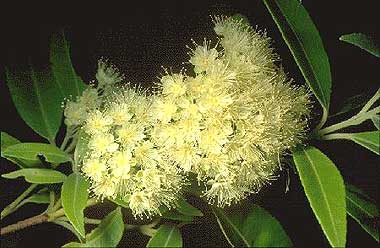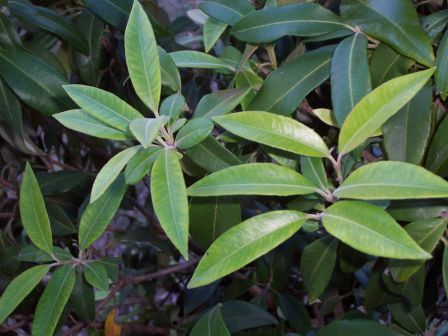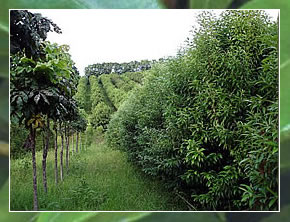An Ode to Lemon Myrtle
Have you tasted those delicious lemon myrtle macaroons in coffee shops around town?
And I mean macaroons, not macarons, the trendy little sweet French ones which Adriano Zumbo has made so famous on MasterChef in Australia.
If not, you’re missing out on a real treat.
Moist, chewy, and infused with lemon myrtle syrup, they’re to die for.
Mind you, at $5 a pop, they’re an expensive indulgence – and twice the price of your average macaron but whoever dreamt up this particular combo has really hit on something.
They’re made with ground almonds, as are the French macarons and gave me the idea to try a version with shredded coconut – in keeping with our Australian macaroon inheritance- and lemon myrtle.
Toasting the coconut before incorporating it into the egg whites and sugar intensifies its flavour – and the addition of lemon myrtle is heavenly.
I also much prefer the shredded coconut to the dried-out desiccated coconut, as it is chewier, moister and has more flavour.
I also happen to love the flavour of lemon myrtle, the leaves of which have an unmistakeable lemon fragrance and high citral content (90-97%) , an essential oil used as a flavouring agent (lemon myrtle is known to be more powerful than tea tree oil in its germicidal properties).
A native of the coastal rainforest area between Taree in NSW and Cairns in Qld, it’s now grown in South in South Australia, Victoria as well as our coldest State, Tasmania.
It grows best in warmer climates but leaf quality varies with plant nutrition, watering regimes, the weather, time of day and harvest cycles. While some growers still pick by hand, most leaves are now machine harvested for the food, cosmetic, fragrance and cut flower industries.
According to native bush tucker pioneer, Vic Cherikoff, larger scale manufacturers generally look to the distilled essential oil which might be solubilised or encapsulated for functionality and ease of use.
My mother grows a dozen or so lemon myrtle trees on the family farm in south east Queensland. Whenever I visit, I love to scrunch up a few of the leaves, pour boiling water over them and drink as a tisane.The leaves are also terrific with baked or steamed fish or added to rice to accompany a curry. Depending on the recipe, you can use an infusion of whole leaves, shred fresh leaves or grind them to a powder in coffee grinder or mortar and pestle (though I prefer to use Herbies’ ground lemon myrtle, as it’s finer).
I’m also very keen on Brookfarms’ lemon myrtle-infused macadamia oil which is superb just drizzled over sliced avocado or seafood such as fresh or barbecued prawns and grilled or smoked salmon.
And the freshly ground lemon myrtle, available from Herbies Spices is fabulous as a flavouring in custards, milk, clotted cream, yoghurt and cakes. I used it to devise my own version of Lemon Myrtle macaroons, a whole batch of which cost me about $5!
And here’s an important tip if you’re intending to infuse ground lemon myrtle through milk or sugar syrup: make sure to add it at the end so that the volatile oils are not upset. Heat will destroys its characteristics.
Bring the milk or sugar syrup to the boil, then remove from heat – when the bubbles have stopped, stir through the ground lemon myrtle and leave to infuse for ten minutes,then strain through a fine sieve.
More info:
www.herbies.com.au
www.brookfarm.com.au





Thanks for your advice about adding at the end.😆
You’re welcome!
How many leaves would you add to a 500g jar of honey infusion
Hi Michele, the person to answer this is Vic Cherikoff as he has developed numerous products using lemon myrtle leaves:
Website: https://cherikoff.net
Ph.(02) 9554 9477
Email:support@cherikoff.net